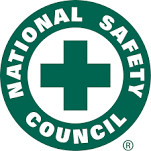From Lagging to Leading Indicators: Why Data-Driven Safety Programs Save Lives
What if the next safety incident at your site could have been predicted and prevented?
Every EHS and Risk leader knows the sinking feeling of reviewing an incident report that starts with “We didn’t see it coming.” But in today’s world, where safety data is abundant yet underutilized, those surprises shouldn’t exist.
Across all high-hazard industries, thousands of organizations still measure safety by what went wrong yesterday instead of what can go right tomorrow. That’s the difference between lagging indicators in safety and leading indicators of safety performance and it’s where the next generation of data-driven safety programs is transforming how companies save lives, protect projects, and prove compliance.
From Reactive to Predictive: The Safety Mindset Shift
For decades, safety programs relied on hindsight. OSHA logs, incident rates, and Experience Modification Rates (EMR) became the default safety performance metrics useful for compliance but limited for prevention.
These lagging indicators in safety measure what has already happened injuries, lost time, and recordables. They reveal trends but not the root causes. By the time those numbers rise, the damage is already done.
In contrast, leading indicators of safety performance look forward. They identify at-risk behavior, environmental conditions, or process gaps before they cause harm. They move safety management from reactive to proactive from counting injuries to preventing them.
The transition isn’t just about metrics it’s a fundamental shift in mindset.
The Real-World Challenge: Data Without Direction
In conversations with Safety Directors and Operations Executives, one pattern is clear: most organizations are collecting data, but few are using it effectively.
Why? Because their systems weren’t built for today’s complexity.
- Manual tracking still dominates. Critical safety documentation training records, certificates of insurance (COIs), audit results, all live in disconnected spreadsheets and email threads.
- Inconsistent prequalification leaves gaps in contractor oversight. One department verifies COIs; another assumes training is current; no one confirms field implementation.
- Limited verification of safety data undermines trust. Lagging indicators are reported quarterly, but leading metrics like the percentage of contractor employees with current site-specific orientations are rarely validated or centralized.
For
Safety Directors, this creates blind spots that allow small issues to compound.
For
Risk Officers, it drives up EMR scores and insurance premiums.
For
Procurement Leaders, it threatens compliance and project timelines when contractors fall short of client standards.
Without a unified, data-driven safety program, the organization remains trapped in a reactive loop waiting for incidents to justify action.
Building a Data-Driven Safety Framework
The strongest safety programs don’t just track numbers - they translate them into insight.
That’s the foundation of
data-driven safety programs, where every training record, COI, and audit result feeds into a single, verifiable source of truth.
Here’s how EHS leaders can make that shift:
Start by Defining What to Measure
Identify both lagging indicators (injuries, lost-time incidents, OSHA recordables) and leading indicators (training completion, audit scores). Together, they provide a balanced view of your EHS performance indicators: a full picture of outcomes and behaviors.
Automate Data Collection and Verification
Replace manual spreadsheets with centralized digital systems. Tools like FIRST, VERIFY automate the collection and verification of contractor safety data from insurance coverage to training documentation, ensuring accuracy and real-time visibility.
Analyze and Visualize Safety Data
Use safety data analytics and dashboards to uncover trends across locations, job types, or contractors.
- Which contractors have expired COIs?
- Which contractor employees have expired training?
- How do safety audit scores compare across your supply chain?
These insights fuel predictive safety analytics, turning isolated data points into early warnings before incidents occur.
Align Safety Metrics with Business Goals
Integrate safety insights into operational and financial decisions. When leading indicators improve, so does performance: fewer shutdowns, lower insurance costs, and faster contractor onboarding.
Turning Insight into Action: A Checklist for EHS Leaders
To move from lagging to leading, EHS teams must transform how they measure and manage risk.
Here’s a practical checklist to get started:
- Audit your current metrics — Are you tracking outcomes or behavior?
- Centralize contractor data — Bring COIs, EMR, training records, and audits into one system.
- Define 3–5 safety KPI examples — Focus on leading indicators tied to your risk profile.
- Automate reminders and renewals — Ensure no document or training slips through the cracks.
- Review workplace safety trends monthly — Don’t wait for quarterly summaries; act in real time.
The New Standard for Safety Excellence
In today’s environment, data-driven safety programs are more than a best practice - they’re an operational imperative.
By connecting leading indicators, predictive analytics, and verified contractor data, EHS leaders gain control over what truly matters: visibility, accountability, and prevention.
Every audit completed, every COI verified, and every training record tracked adds another layer of protection - not just for compliance, but for the people who make your operations possible.
Because in the end, safety isn’t a statistic. It’s a promise.
And the more data you can trust, the stronger that promise becomes.
Take Action: Bring Data to the Front Line of Safety
If your organization is still managing contractor compliance manually or relying on outdated, reactive metrics, now is the time to evolve.
FIRST, VERIFY helps EHS, Risk, and Operations leaders turn fragmented safety data into proactive insight through verified contractor prequalification, customized audits, and automated compliance tracking.
- Centralize safety performance metrics
- Verify contractor documentation
- Identify risks through predictive safety analytics
- Build a culture of prevention and accountability
Turn your data into foresight - not hindsight.
Visit
www.firstverify.com to learn how
FIRST,
VERIFY helps organizations transform safety data into safer outcomes.






